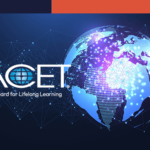Leverage the Power of Microlearning: Bite-Sized Knowledge
Written by Dr. Angela Robbins and Kristen Stevenson, ABD
Microlearning has helped transform education and training by reducing complex ideas into concise, impactful chunks of knowledge that are effortlessly absorbed and readily applied. In our fast-paced world, where extended learning sessions often clash with the demands of daily life, microlearning offers an efficient solution. Delivering swift, digestible bursts of information is ideally suited for the modern professional or student. This approach is popular and practical, seamlessly integrating continuous learning into even the busiest schedules, ensuring you stay sharp and ahead of the curve in your field or chosen studies.
Understanding Microlearning

Microlearning is like the espresso shot of education—quick, potent, and invigorating. It simplifies complex subjects into short, focused sessions that last just a few minutes each, zeroing in on a single objective, topic, skill, or concept (Cole, 2018). Learning in small pieces helps improve long-term recall, reinforcing the concepts by recalling different parts of the lesson over time to improve knowledge retention and productivity (Andreev, 2024).
This method contrasts with traditional, lengthy courses by providing compact lessons that easily fit into any busy schedule. Research indicates that our brains are better at absorbing and retaining information when presented in these short bursts, which can improve focus and enhance memory encoding. Studies involving medical students have demonstrated significantly higher retention rates with microlearning than with traditional learning approaches (Thillainadesan et al., 2022). For example, of a group of clinical students from the UK in years four and five and recent graduates who participated in a six-week asynchronous microlearning virtual consultation course, 95.7% found the module beneficial, 95.9% reported increased self-efficacy to conduct a virtual consultation successfully, and 95.9% would recommend the course to others (Liew et al., 2023).
Benefits of Microlearning
Microlearning transforms education into engaging, brief narratives tailored for quick learning, perfect for today’s fast-paced lifestyle. Its short sessions help to grab and hold attention, making it easier to focus and learn efficiently. This approach is also highly flexible and accessible, easily fitting into any tight schedule and available across multiple platforms, including mobile apps and e-learning portals (Taylor & Hung, 2022). This is the premise behind software such as Duolingo and Rosetta Stone, which focuses on short foreign language lessons that introduce new vocabulary while reinforcing previously learned phrases. Microlearning is cost-effective, requiring fewer resources for development and updates, saving time and money.
Implementing Microlearning
Effective microlearning hinges on focused content and diverse delivery methods, such as videos, quizzes, and interactive modules (Lee et al., 2021). Educators can use tools like learning management systems, specialized apps, or even Instagram and other social media apps to create engaging courses. When developing microlearning, it is best to start by identifying the core learning objective and then breaking it into small units with engaging visuals and interactive elements. This method ensures each segment is purposeful and tailored for quick, impactful learning bursts. You may consider adding short video vignettes, such as this case study created by eLearningDOC, to propel microlearning forward.
Applications of Microlearning
Microlearning is utilized in various settings, from corporate training at companies like Walmart and Bank of America to education in schools and colleges. It supports flexible learning schedules and enhances knowledge retention across different environments. Online courses benefit from microlearning through targeted, quick lessons on various subjects. This adaptability makes it a valuable tool for continuous learning and skill development (Fox, 2016). In a professional environment, microlearning can help build a culture of learning, close skills gaps, promote personalized learning, provide flexible learning, boost learner engagement, keep pace with emerging trends, solve specific problems, increase employee retention, create broader learning opportunities, and reduce training costs (Dewar, 2023).
Challenges and Considerations
Despite its advantages, microlearning faces challenges, particularly with complex subjects that require deep understanding. It might not suit every content type and could meet skepticism from stakeholders (Lohman, 2024). To promote its value, it’s crucial to demonstrate its effectiveness in improving knowledge retention and application, especially where learning time is limited. Microlearning can complement traditional methods by making complex training more digestible and engaging.
In Summary
Microlearning offers a dynamic and effective educational approach, providing concise, engaging learning opportunities suited to modern needs. Whether enhancing corporate training, supporting academic pursuits, or fostering personal growth, microlearning adapts to and enriches any learning environment. To implement microlearning, start by defining specific objectives, exploring suitable platforms and tools, and considering launching a pilot program to refine the approach based on feedback. Microlearning stands as a significant step toward more efficient and effective learning strategies.
Contact eLearningDOC to discuss how we can help your company or organization with blended learning.
Read the eLearningNEWS for the latest eLearning trends for education, industry, healthcare, and business
Citations
Andreev, I. (2024, April 3). Microlearning. [Blog]. Valamis Knowledge Hub. https://www.valamis.com/hub/microlearning
Cole, M. (2018). Is Bite Size the Right Size? TD: Talent Development, 72(11), 12–13.
Dewar, J. (2023, March 2). 10 benefits of microlearning for modern teams. [Blog]. LinkedIn Talent Blog. https://www.linkedin.com/business/talent/blog/learning-and-development/benefits-of-microlearning
Fox, A. (2016). Microlearning for Effective Performance Management. (Cover story). TD: Talent Development, 70(4), 116–117.
Lee, Y.-M., Jahnke, I., & Austin, L. (2021). Mobile microlearning design and effects on learning efficacy and learner experience. Educational Technology Research & Development, 69(2), 885–915. https://doi.org/10.1007/s11423-020-09931-w
Liew, S. C., Tan, M. P., Breen, E., Krishnan, K., Sivarajah, I., Raviendran, N., Aung, T., Nimir, A., & Pallath, V. (2023). Microlearning and online simulation-based virtual consultation training module for the undergraduate medical curriculum – A preliminary evaluation. BMC Medical Education. 23. https://bmcmededuc.biomedcentral.com/articles/10.1186/s12909-023-04777-1
Lohman, L. (2024). How can you deliver microlearning when learners don’t want it? Designing microlearning for socially oriented learners. Educational Technology & Society, 27(1), 147–165. https://doi.org/10.30191/ETS.202401_27(1).SP03
Taylor, A., & Hung, W. (2022). The Effects of Microlearning: A Scoping Review. Educational Technology Research & Development, 70(2), 363–395. https://doi.org/10.1007/s11423-022-10084-1
5 Ways to Design Quality Microlearning. (2022). TD: Talent Development, 76(3), 72.
Thillainadesan, J., Le Couteur, D. G., Haq, I., & Wilkinson, T. J. (2022). When I say … microlearning. Medical Education, 56(8), 791–792. https://doi.org/10.1111/medu.14848








